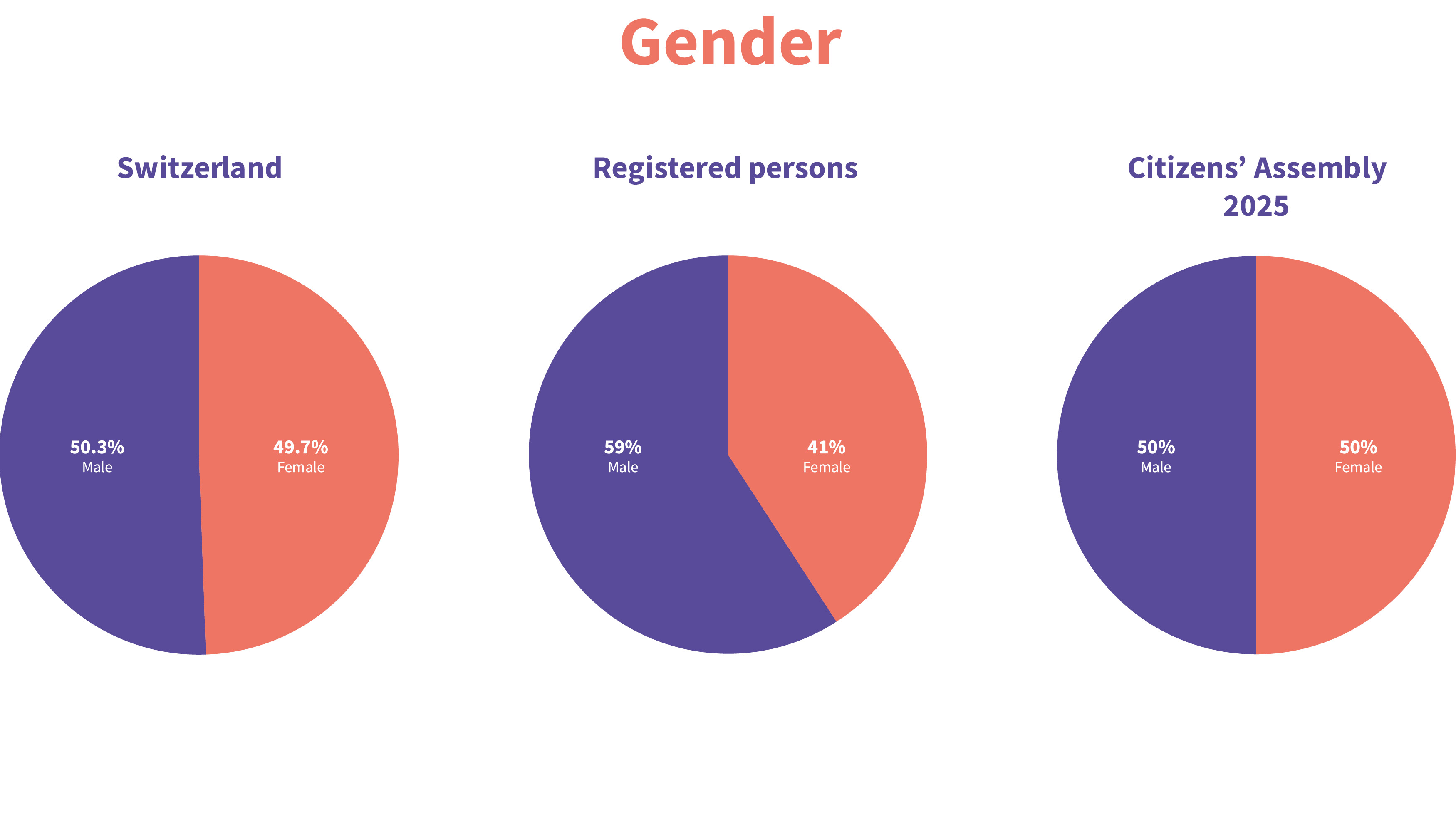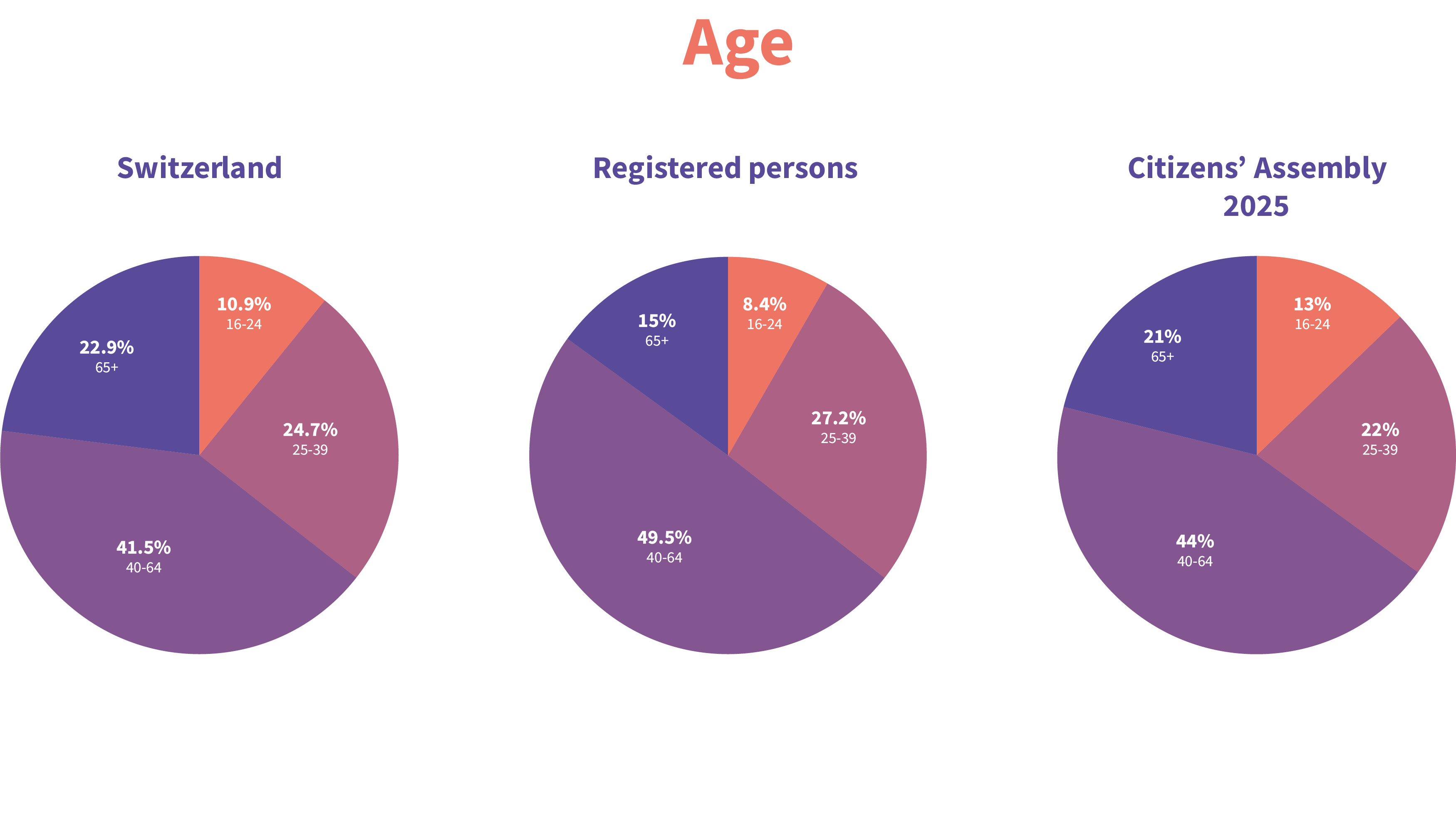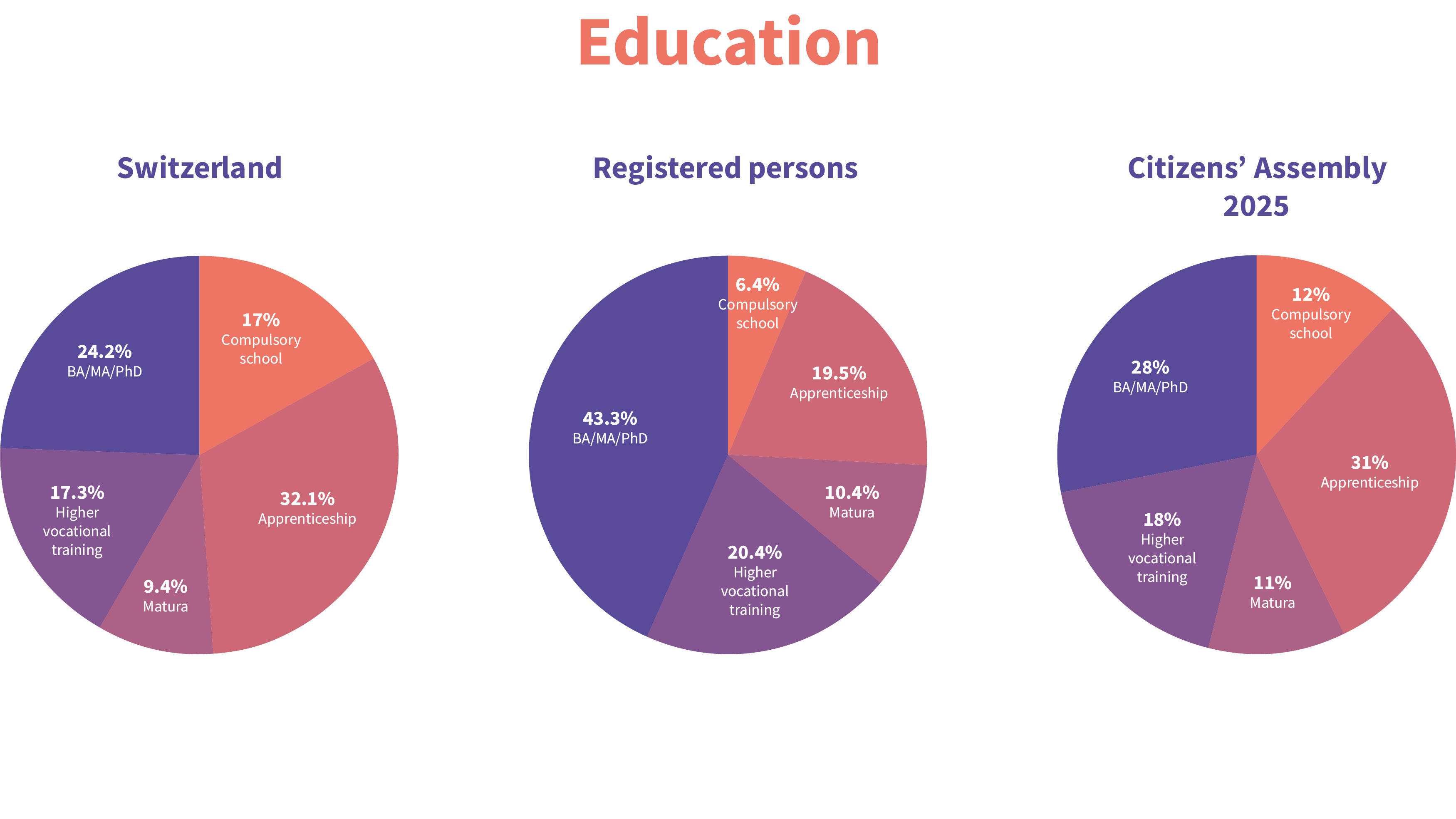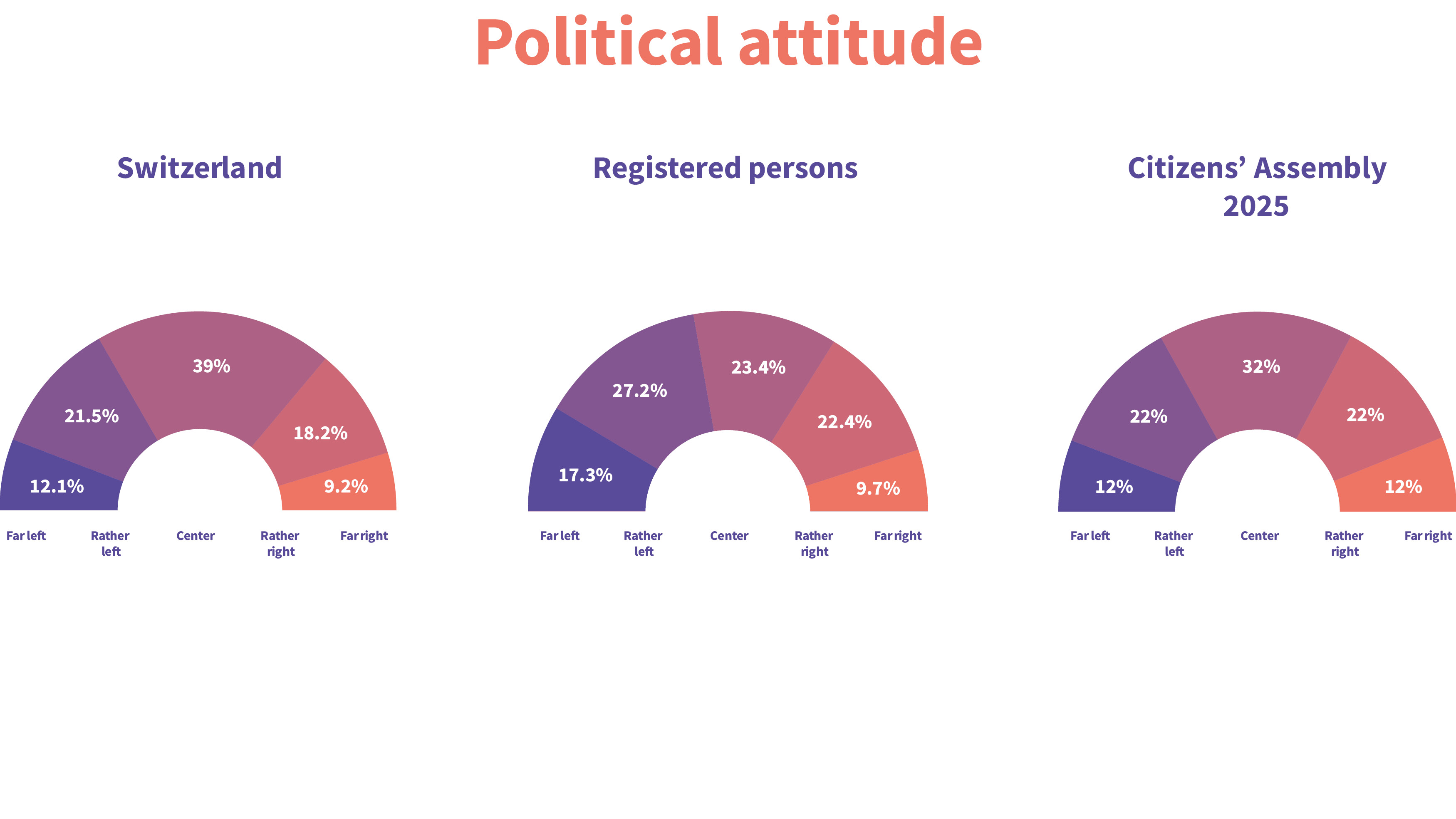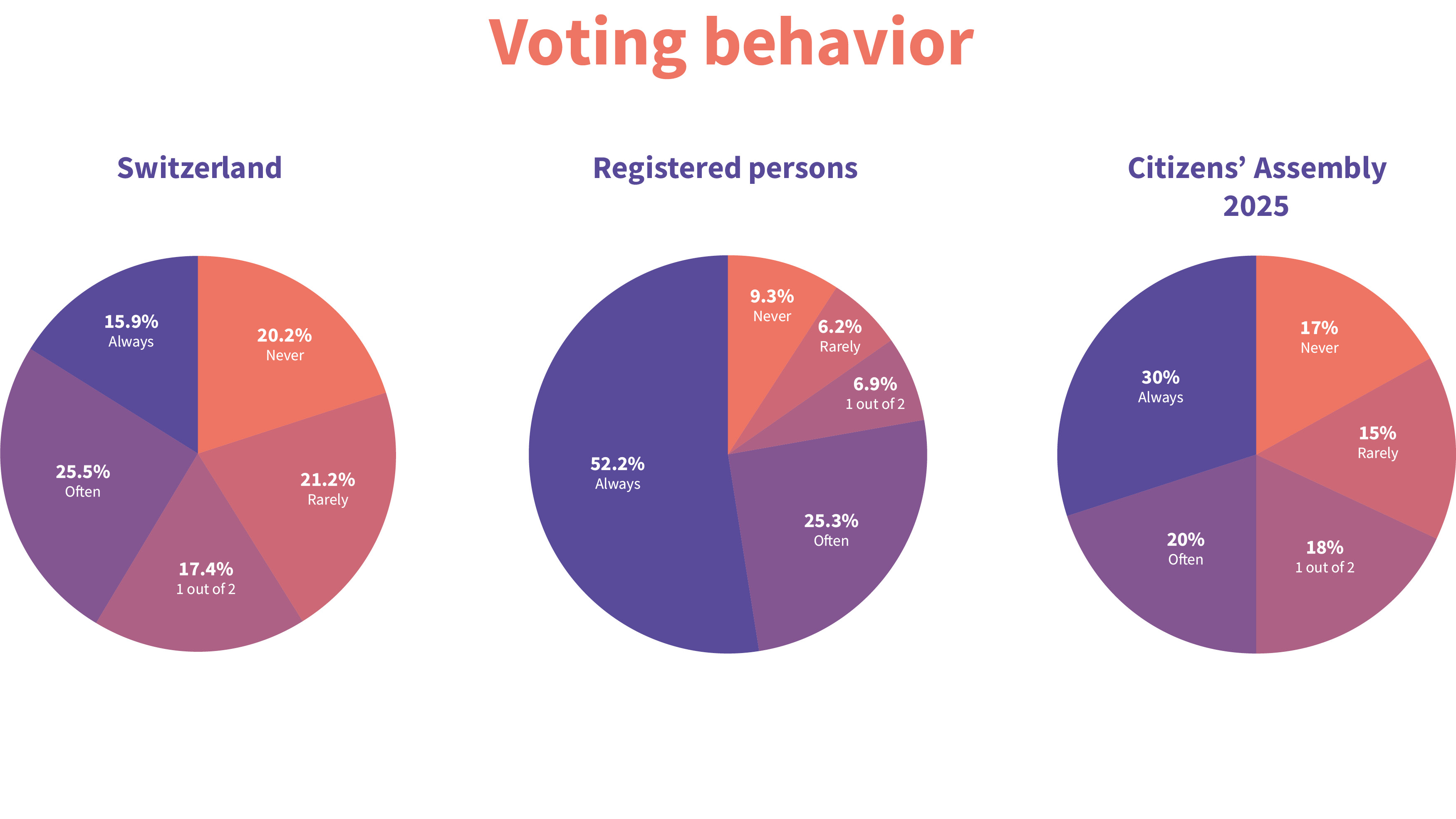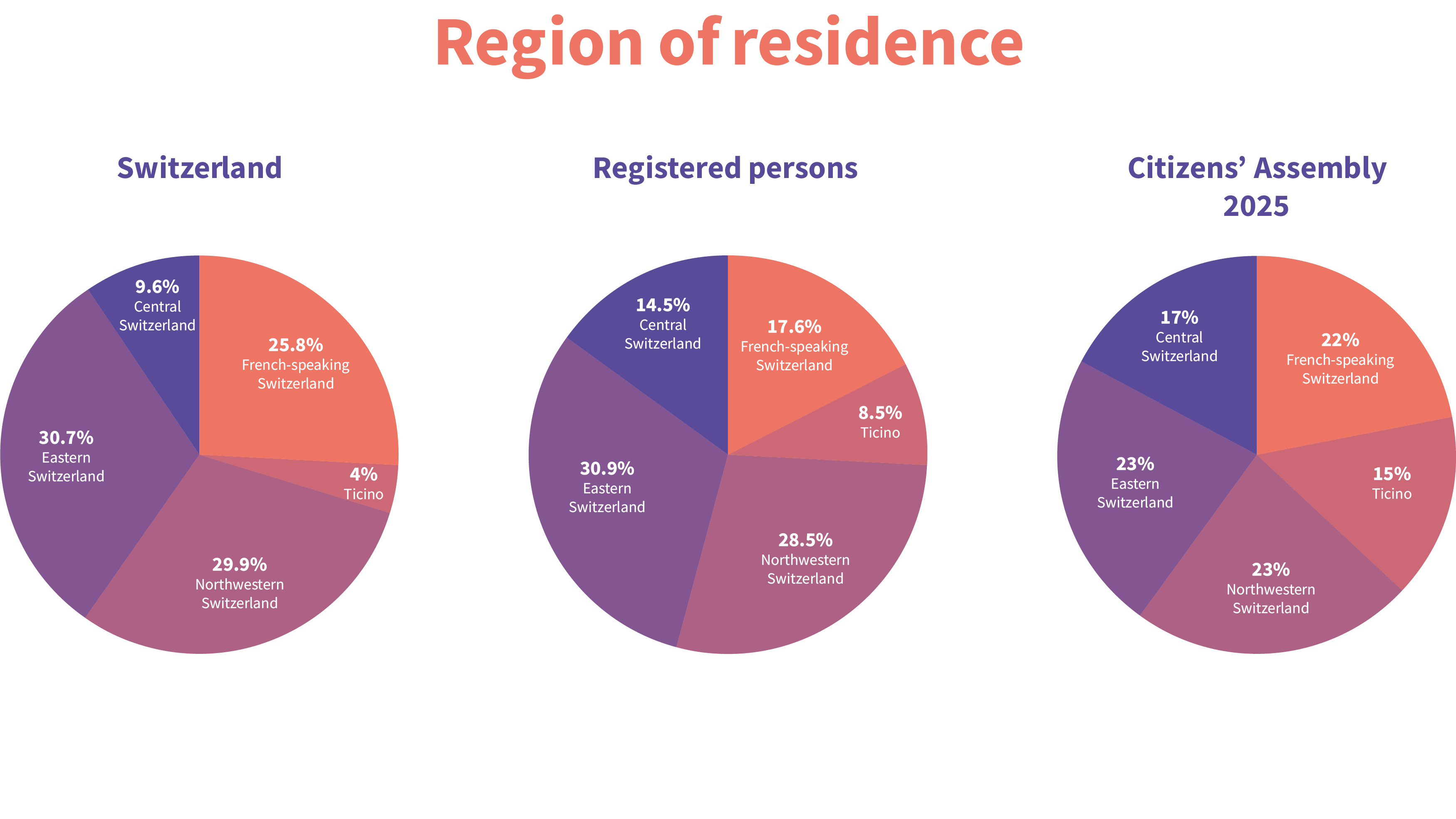Composition

The Citizens’ Assembly was intended to reflect the diversity of the Swiss population as closely as possible. This meant, for example, electricians sitting alongside kindergarten teachers, and retirees alongside young people. To ensure this diversity, the participants were selected by sortition.
The following figures illustrate the composition of the Citizens’ Assembly 2025 in comparison with the Swiss resident population, as well as with the 2,004 people who registered to participate in the Citizens’ Assembly.
Gender, age, and education
While a majority of men registered for the Citizens’ Assembly, this imbalance was corrected through the second sortition (the data are provided by the Federal Statistical Office and are based on the binary gender classification under Swiss law).
In the Citizens’ Assembly, the age group “25–39 years” is slightly underrepresented compared to the overall population, while the age group “40–64 years” is slightly overrepresented.
Based on previous experiences with recruitment procedures for citizens’ assemblies, the criterion of “education” is particularly challenging when it comes to achieving a balanced distribution. Individuals without post-compulsory education not only participate less frequently in elections and referendums, but are also significantly harder to engage in more intensive forms of participation. Conversely, individuals with higher levels of education are disproportionately willing to take part in citizens’ assemblies. The second sortition largely corrected this imbalance, although there remains a slight underrepresentation of individuals without post-compulsory education in the Citizens’ Assembly.
Political orientation & voting behavior
In Citizens’ Assemblies, a two-stage sortition procedure is mostly used to achieve the most accurate possible reflection of the overall population (descriptive representation). However, this alone does not guarantee that a citizens’ assembly will also include a wide variety of opinions and perspectives. For this reason, political orientation was also taken into account when forming the Citizens’ Assembly. The aim was to achieve the most balanced distribution of different political orientations possible.
The category of “voting frequency” was used to capture how regularly the registered individuals take part in elections and referendums. This category makes it possible to deliberately include the views and perspectives of those who otherwise do not, or only rarely, participate in established forms of political engagement.
As with the education category, achieving a distribution that closely mirrors the overall population is challenging. This is reflected in the distribution among those who registered: individuals who vote often or always are overrepresented compared to those who rarely or never vote. The second sortition largely corrected this imbalance, although there remains a slight underrepresentation of individuals in the Citizens’ Assembly who seldom engage politically.
Place of residence & region of residence
Another category records whether the members of the Citizens’ Assembly live in an urban, intermediate, or rural area. The final category captures which region of Switzerland the members of the Citizens’ Assembly come from. Here too, efforts were made to represent all regions as evenly as possible in the Citizens’ Assembly, which has resulted in a slight overrepresentation of Central Switzerland and Ticino.
Overall, the two-stage sortition made it possible for the Citizens’ Assembly to achieve a highly diverse reflection of the Swiss resident population. This ensures that the Citizens’ Assembly mirrors the variety of opinions and the different experiences found within Swiss society.
The “Citizens’ Assembly” format promotes respectful exchange between people with different views, with the aim of fostering mutual understanding and finding common solutions. According to the recently published Diversity Study by the Gottlieb Duttweiler Institute, the Swiss population tends to surround itself primarily with like-minded individuals.
Sources for the population data:
- Age and gender:
https://www.bfs.admin.ch/bfs/en/home/statistiken/kataloge-datenbanken.assetdetail.26565301.html - Education:
https://www.bfs.admin.ch/bfs/en/home/statistiken/bildung-wissenschaft/bildungsstand.assetdetail.30148618.html - Political orientation:
https://www.bfs.admin.ch/bfs/en/home/statistiken/wirtschaftliche-soziale-situation-bevoelkerung/soziale-situation-wohlbefinden-und-armut/subjektives-wohlbefinden-und-lebensbedingungen/politik.assetdetail.30526475.html - Political participation:
https://onlinelibrary.wiley.com/doi/full/10.1111/spsr.12178 - Spatial distribution:
https://www.atlas.bfs.admin.ch/maps/13/en/17223_12361_3191_227/26733.html - Regional distribution:
https://www.bfs.admin.ch/bfs/en/home/statistiken/bevoelkerung/stand-entwicklung.assetdetail.27965833.html
